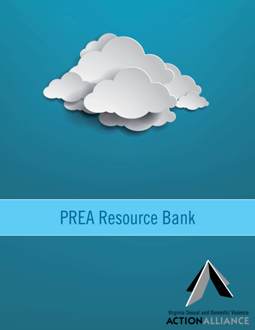Resources Library: Tools
Start a Search:
New Resources on Adult Fatality Review in Virginia
As of July 1, 2015, Virginia law supports the formation of local and regional Adult Fatality Review Teams (AFRTs) to identify and review deaths involving abuse, neglect and exploitation of incapacitated and older adults in the Commonwealth. Resources to assist communities in forming AFRTs can be found here.
Power and Control Wheel for Lesbian, Gay, Bisexual and Trans Relationships
The Power and Control Wheel for Lesbian, Gay, Bisexual, and Trans Relationships provides definitions and examples of coercive and abusive behaviors that may be present in LGBT relationships. The wheel can be used as a training tool for advocates and service providers, as well as a supportive and enlightening resource for survivors.
PREA Part 1: What is the Prison Rape Elimination Act (PREA) Resource Bank?

If you are an advocate or an employee of a correctional facility or a juvenile detention facility, this online Resource Bank is for you – here you will find a collection of essential PREA resources, research, toolkits, templates, training, and more.
What is PREA?
PREA is the first United States federal law dealing with the sexual abuse/assault of people who are incarcerated. The intention of PREA is to address the prevention, reduction, and elimination of sexual assault and rape within all correction settings, including juvenile facilities.
Let’s Be Effective: Integration, Coordination, Consistency
If PREA is to be effective, it is critical that the key stakeholders implementing the standards and providing services for the people who are incarcerated do so in an integrated and coordinated way.
The PREA Resource Bank is designed to address a variety of perspectives and disciplines while also providing tools and resources focused on integrating and coordinating the multiple points of contact that a person who is incarcerated will encounter.
This Resource Bank is divided into 7 sections: 1. Back to Basics 2. PREA in Practice 3. Special Populations 4. Advocacy in Focus 5. Corrections in Focus 6. Key Reports & Research and 7. Training on Demand. In the Related Resources section at the bottom of this page, you can click on each section.
REQUEST TRAINING: Training and Technical Assistance. The Action Alliance Training Institute offers Training on Request and Technical Assistance on PREA. For more information: http://www.vsdvalliance.org/#/training/by-request.
PREA Part 2: BACK TO BASICS: What is PREA? What are the Rules?

PART 1: BACK TO BASICS: What is PREA? What are the Rules?
PREA is the first United States federal law dealing with the sexual abuse/assault of people who are incarcerated. The PREA Resource Bank, which offers a collection of essential PREA resources, research, toolkits, templates, and training, is divided into 7 sections.
Part 1, Back to Basics, is a good place to start. This section provides the statute, Department of Justice Standards, information about confidentiality and ethics, and the basics about sexual abuse in correctional facilities.
PREA Part 3: NOW WHAT? PREA IN PRACTICE: Implementing PREA

PREA is the first United States federal law dealing with the sexual abuse/assault of people who are incarcerated. The PREA Resource Bank, which offers a collection of essential PREA resources, research, toolkits, templates, and training, is divided into 7 sections.
Part 2, Now What? PREA in Practice, drills down into implementing PREA for both advocates and correctional facilities. Here you will find toolkits, model policies and MOUs, operating procedures, guides, printable brochures, and checklists.

